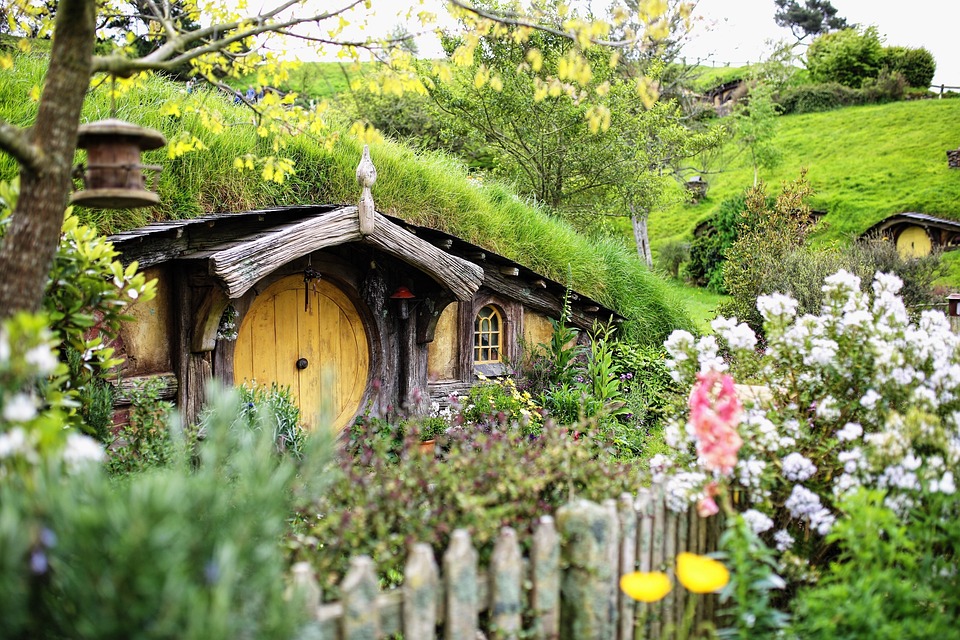The Fellowship of the Ring go off on their quest to Mordor to stop Sauron’s plan to conquer Middle-Earth. Bilbo Baggins and the dwarves of Thorin Oakenshield go on a journey to reclaim the dwarves’ gold from Smaug. These were the tales the legendary writer J. R. R. Tolkien wrote to pass the time. Unwittingly, though, his works would attract millions upon millions of fans. Indeed, J. R. R. Tolkien revolutionized fantasy and laid the groundwork for many more fantasy epics and stories to come.
But the question is, how did he do it? What led such a revolutionary writer to become the Shakespeare of modern-day fantasy fiction?
J.R.R. Tolkien’s Brief Biography

On January 3, 1892, John Ronald Reuel Tolkien was born in Bloemfontein, South Africa. When his Catholic mother died in 1904, Tolkien and his younger brother became wards of a Catholic priest.
When he was 14, Tolkien fell in love with orphan girl Edith Bratt, who inspired Lúthien Tinúivel, the immortal elf maiden. Tolkien’s guardian (I’d bet he inspired Thingol, Lúthien’s father) disapproved and couldn’t marry her until he was 21.
Before he married Edith, though, he went to Oxford University and graduated with a Doctorate of Letters. He took an interest in English and Norse mythos and learned Old and Middle English. He also had dealings with his own artificial languages while studying. These artificial languages would soon pave the way for Quenya, Sindarin, and other Legendarium languages.
He soon joined the fight with his three friends (who probably inspired Frodo’s three hobbit companions) and saw action in WWI (here I’d bet this was what inspired him to write about the endless orc armies) where he served in Somme.
After the war, he returned to Oxford and got a job as a professor, and taught Old and Middle English in the University of Leeds and Oxford. He would write stories in his pastime, which stemmed from his love of the mythos of the English and wanting to tell stories to his children.
So when he got around to writing The Hobbit, everything was already in place – his love of mythologies and fables, his stellar education, and his sheer imagination and the inane writing demons by his side, Tolkien got around to writing his legendarium. The legendary saga, The Lord of the Rings, his epic of 9 books. The Hobbit, a book he wrote before LOTR, its predecessor. And one sourcebook, the Silmarillion. And then the posthumously published 12 volumes of The History of Middle-Earth which was compiled and edited by Tolkien’s son, ChristopherThis was an amazing tale that many writers still take inspiration from, even today.
Personally, I can attest to this approach. Many of the characters I create are inspired by the people around me. In the wise words I’ve heard God knows how many times now, “Write what you know”. This is one piece of writing advice Tolkien adhered to a T. And in my opinion, you should too.
How Did Tolkien Transform Fantasy

The fantasy scene before Tolkien’s time was different. Yes, there were still some works of sword and sorcery like the Violet Fairy, but the commonplace stories were the likes of “Alice in Wonderland”, “Treasure Island”, etc. It was just that something about the vibe of Tolkien’s world hit differently and set it apart from the worlds of other writers.
In the end, Tolkien didn’t just revolutionize fantasy, he downright changed it forever. The influence of Tolkien’s works will continue to grow for many, many, many years to come.
Of course, Tolkien worked extensively on his fantasy world, Middle-Earth, mapping out the landscapes and writing made-up languages. The painstaking effort he put into fleshing out Arda was one of the many things that brought it to life. You don’t have to be an Old and Middle English professor at Oxford to invent your own languages, I mean, but I think it gave Tolkien an edge.
When the Lord of the Rings first hit the shelves in the late 30s to early 40s, it created a counterculture movement – where the Lord of the Rings wasn’t the norm. From this movement arose probably the first nerds in history. Whereas young boys in the 60s and 70s were expected to be athletic and strong, Tolkien caused the nerds to come out in force. And my forefather nerds, bless them, their nerdy hearts, stood (mostly) proud and defiant against the absolute shitstorm of mockery and bullying that hit them.
One of the many reasons the so-called ‘nerds’ equivalized Tolkien as basically, the Jesus Christ of fantasy was because of one thing: Escapism. This world was vast and free, so you could soar over the Misty Mountains or lead armies to war in Mordor if you had the imagination to believe you could. This world of imagination gave nerds an escape from the harsh reality of the world, allowing them to step out of their skin and let the realms of creativity whisk them away, if just for a moment. Tolkien’s work directly influenced others to follow suit and write their own fantasy stories.
For the then-mainstream culture, everything went downhill. Tolkien’s work led to the creation of Dungeons and Dragons, which was created in an attempt to give people a chance to step into the realms of their stories and not merely observe them. This in turn led to the first RPGs like dnd and Rouge made in an attempt to replicate D&D. All roads of fantasy led back to Tolkien, the Father of Fantasy.
The Aftermath

Today, fantasy has many familiar tropes: mighty warriors and skilled mages ally themselves with greedy thieves and zealous priests or dragons flying down from the mountains and goblins and orcs. All these clichés came first from the pen of J.R.R. Tolkien – an author and academic who only wrote stories as a pastime. However, these staples of fantasy would not have become commonplace unless writers inspired by him didn’t follow in his path.
Some literary legends like George R. R. Martin (Of Game of Thrones fame) and Orson Scott Card (The mind behind Ender’s Game) among other writing geniuses have taken inspiration from Tolkien’s legendarium.
And now thanks to those legends, we have a bigger (and in my honest opinion) better fantasy scene post-Tolkien. Percy Jackson and the Olympians, Prince of Ravens, Conan, and many other works were heavily influenced by Tolkien’s work.

